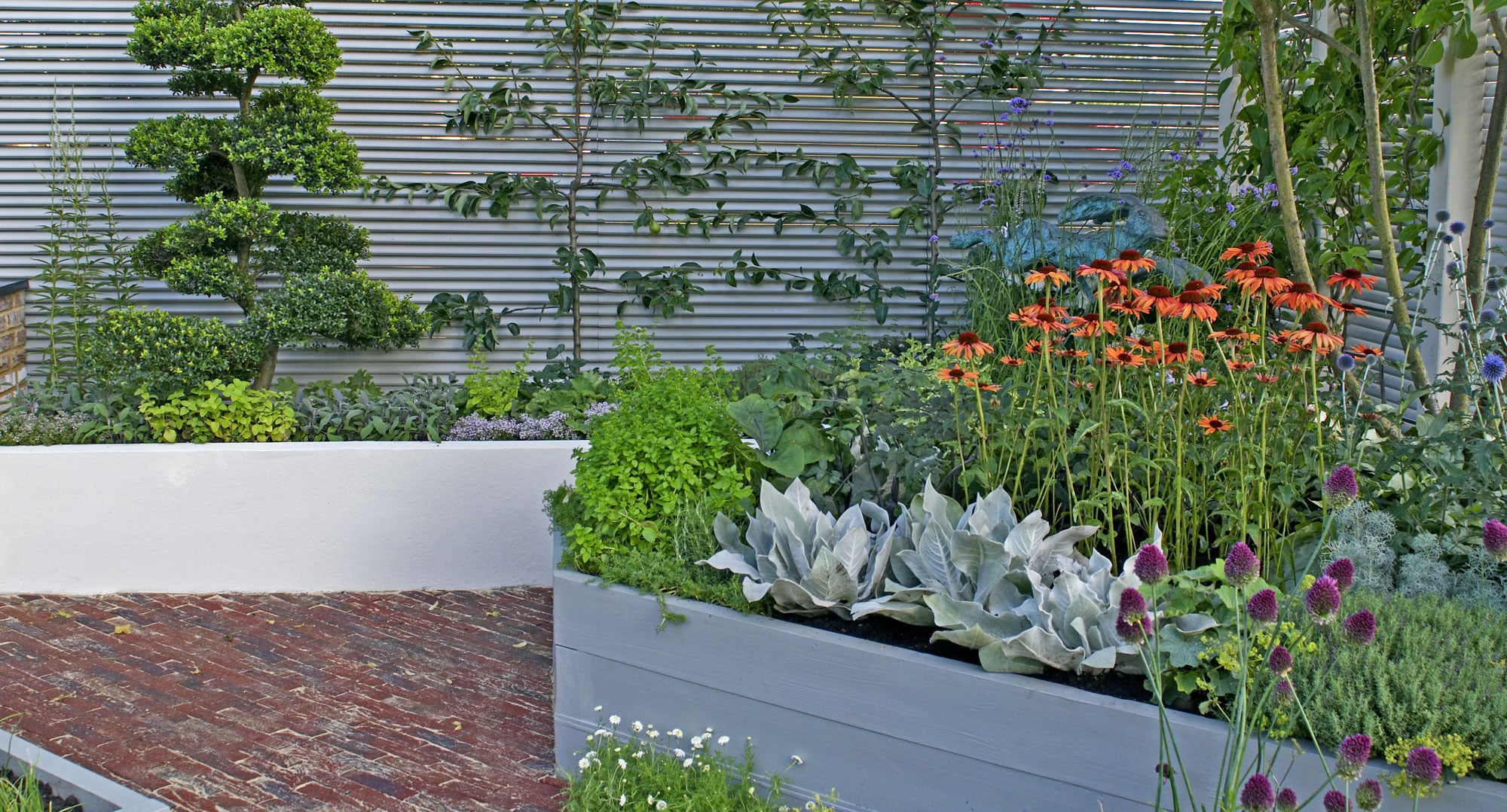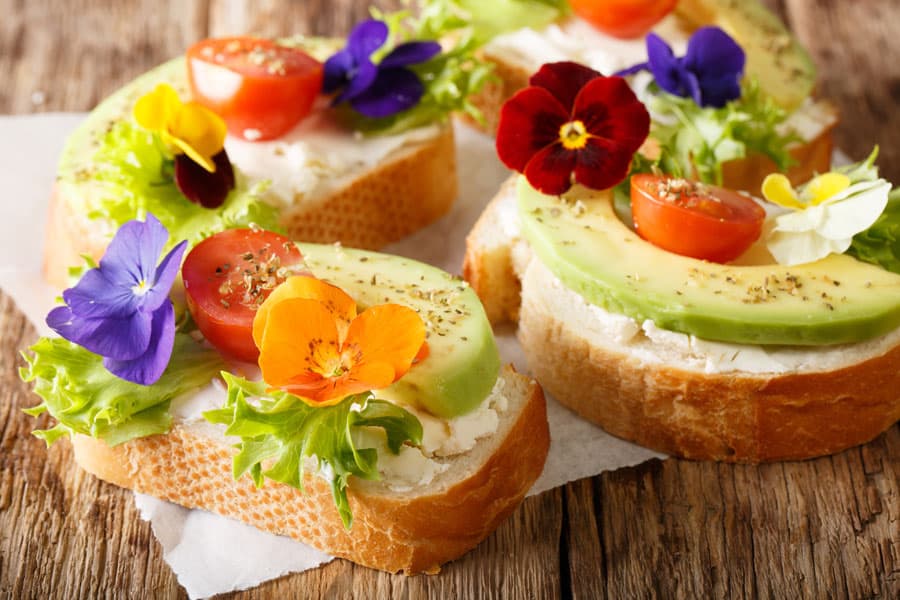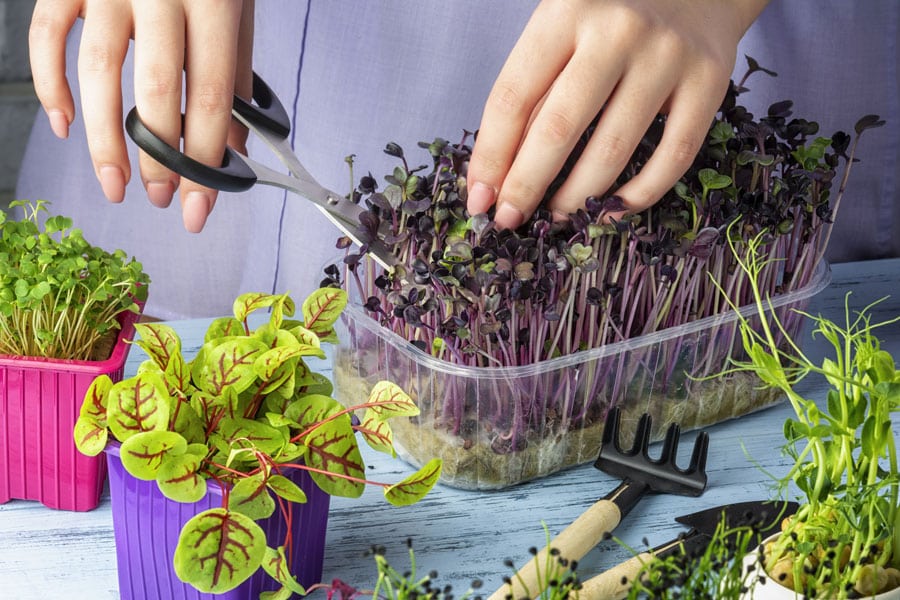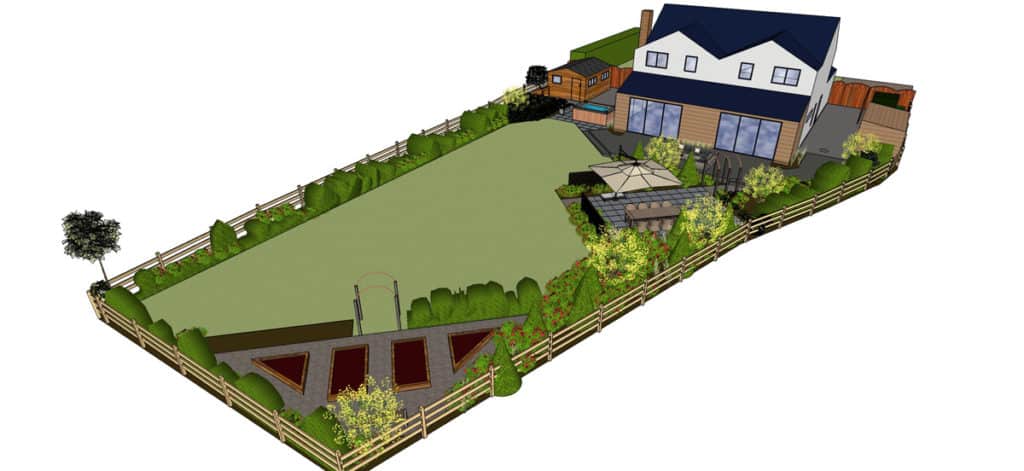01 Apr The Chef’s Garden – How to design a garden full of flavours
Did you know that your garden could truly enhance your cooking? Here’s how to design a chef’s garden full of flavours that aren’t necessarily vegetables.
The idea of growing your own vegetables in the garden is nothing new. It’s been done for centuries. But did you know that there are a wealth of edible flowers, herbs and fruits that are infused with flavour as well as being decorative. At Tapestry Design Studios, we love the idea of a chef’s garden – a ready source of garnishes and flavourings for edible treats and exciting meals.
What to grow in your chef’s garden
Edible flowers
Edible flowers make wonderful garnishes for salads, pasta dishes, cakes and biscuits. Some can also be used to infuse your baking with flavour. The real joy of edible flowers though, is that they are far more decorative than vegetables.
One of my personal favourite edible flowers is the nasturtium. The brightly coloured blooms have a peppery taste, just right for brightening up a salad. Even better – the leaves are edible too. So this plant is a good allrounder. Nasturtiums are easy to grow from seed and look great grown in a large pot where they can spill over the sides.
Pansies and violas have bright happy faces and can be bought reasonably cheaply from the garden centre. They’re great in pots but equally lovely planted alongside a path or in the front of the borders. These beauties will flower all summer long, right up until the first frosts. Add the petals to salad or use them to garnish cupcakes. Beautiful
Chive flowers perhaps don’t spring to mind when we’re talking about edibles, but they’re lovely! They taste a like a mild version of the herb itself and would be lovely sprinkled atop a potato salad. The flowers themselves are pom-pom shaped with many hundreds of petals in each bloom. Pull them apart and sprinkle the coloured florets (a full flower head would be a bit too much of a mouthful!)
Micro-Greens
If you don’t have the space, or the inclination, for a full blown vegetable patch, why not consider growing micro-greens? These tiny leaves are just bursting with antioxidants and nutrients, plus they only take a few days to grow big enough to eat. Grow in pots or trays on the patio or in the greenhouse. You could even create a series of raised shelves to put them on. A bit like an edible living wall.
Try peas, sweetcorn, cabbage, lettuce, watercress, dill or radish – all of these are delicious and quick to grow, making them the perfect way to encourage children to garden and to eat their greens.
 Herbs
Herbs
Herbs don’t need a lot of room to grow and most of them are very low maintenance. If you decide to grow herbs to flavour your food, it’s worth investing in a food dryer. The fresh leaves can be dried out and stored for the winter so that you have an all year round supply.
Most herbs love well drained soil and grow happily in containers near the back door (or close to your outdoor kitchen)
Seeds
It’s possible to grow quite a few types of protein packed seeds in the UK. These are great for adding crunch to a dish and some make tasty snacks. Be prepared to put aside quite a lot of space if you want to grow quinoa or pumpkin seeds – the plants are huge!
Sunflower seeds are easy to grow – the flowers may be tall, but they’re slim too and can easily be slotted into a border or grown beside your fence.
Designing your chef’s garden
Once you have decided what to grow, you’ll need to think about the layout of your chef’s garden.
I recommend growing in small beds or in containers, positioning all of the plants so that you can easily reach over to pluck a flower or a leaf when you need it.
How will you access your growing area? Do you need paths? Raised beds? A living wall framework?
Is your chef’s garden near enough to your cooking area? Having herbs and garnishes right next to your outdoor kitchen takes eating al-fresco to a whole new level
Consider what the plants need in order to thrive. Site your chef’s garden in a sunny spot and make sure it’s easy to keep the flowers and herbs well watered.
Try to make the space pretty as well as practical. We eat with our eyes first – why not make your food look appetising before you’ve even picked it?
Incorporate your chef’s garden with the rest of your outdoor space – aim for a smooth journey to and from the space. Think about having a nearby seating area so that you can envelope yourself in the sights and smells of your next meal.
This garden, designed by Tapestry Design Studios has a patio, hot tub, outdoor kitchen, al-fresco eating area and growing space all integrated into a free-flowing garden that is a real asset to the owner’s lifestyle.
For hints and tips on how to design your garden layout, take a look at this article.
Planning an outdoor kitchen? Read this first.
For a professional garden design which suits your family’s lifestyle, contact Tapestry Design Studios
You may also like
How to style your vegetable garden






 Herbs
Herbs
Sorry, the comment form is closed at this time.